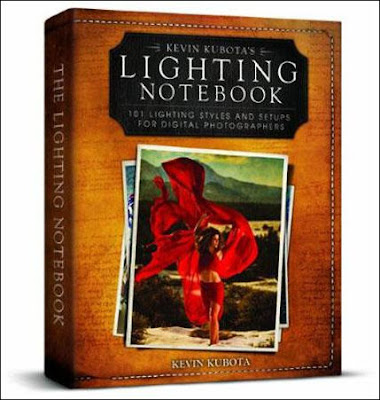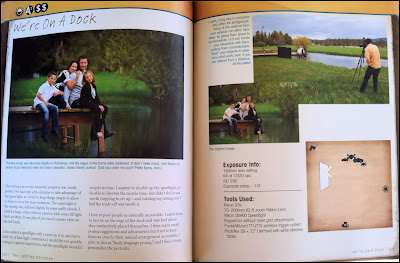
Let me share with you what I like so much about Kevin Kubota's "Lighting Notebook".
The first 6 chapters cover most of the important things you will ever need to know about lighting.
Chapter one - is a brief history of lighting that will actually walk you back to the 1930's.
Chapter two - goes over the "lingo of lighting". So as you read this book (or delve deeper into your lighting education) you'll understand what is being talked about, things like 2-point lighting, Rembrandt lighting, back-lighting, etc., if there is a lighting term, Kevin covers it in this chapter.
And just so you know Rembrandt lighting comes from, who else, Rembrandt and references the lighting style he would use when painting portraits, here is an image that is a perfect example of what this lighting style represents:

Chapter 3 - talks about metering, balancing natural and artificial light, high speed and rear curtain sync, white balance, color temps and more.
Chapter 4 - covers lights and lighting tools like softboxes, beauty dishes, umbrellas, triggering tools, etc..
Chapter 5 - will help you build your own lighting kit, selecting the kind of tools that will best fit your photography style and practice.
Chapter 6 - demonstrates creating light in software such as Lightroom, Photoshop, Bridge, and Aperture.
I know this is not the "fun & sexy" part of taking photographs, but you can't build a house without a solid foundation and these first six chapters are the solid foundation you will use to build your "house of lighting techniques" on.
It's once you have finished with the foundation that the fun truly begins, because what follows are 101 different beautiful photographs and everything you would need to know about how they were shot.
Each image is a two page spread and is set up like this:
On the left hand page is a key in the upper left corner telling you what type of lighting was used, be it Natural, Artificial, or a combination of the two.
It will also tell you if any assistants were needed, and if so, how many. Last of the keys is a cost key. It will let you know at a glance if the image was inexpensive, expensive, or somewhere in between shoot (related to the gear needed to make it happen).
The rest of the page has the finished image and a description of how the shot was setup and taken.
On the right page you will find camera settings, gear list, a lighting diagram, and two or three action shots of the photograph being taken.
If there is an alternative piece of gear that could be used to get the same results, you will find that listed here as well.

The Lighting Notebook is one of those books that is a true page turner, once you pick it up it won't leave your hands until you get to the last page, then again you may start going through it a second time before putting it down.
Just in case you aren't picking up my "vibes" the review is two thumbs way up for this book.
This is not the first thing from Kevin that I have truly liked, as I have been a big Kevin Kubota fan for some time and have posted about what he has to offer to photographers more than once (or twice) on Weekly Photo Tips. Like:
You will find my interview with Kevin Here.
I had the pleasure of attending his seminar in Vermont, which was HUGE fun.
In this post I shared his trick on how to correctly synchronize the capture times in Lightroom for images shot from 2 or more cameras, so they will all the images will appear in the correct chronological order.
And I have raved in more than one post about his Lightroom training DVD's, because they contain so much useful information, much more than just editing in Lightroom.
OMG, this kinda makes me look like a stalker!
;)
I am sure if you buy this book you will find it as educational and useful as I did.

3 comments:
I bought it Scott, and it is indeed one of my best instructional books.
Now that makes 2 really smart, handsome men who said the book good!
;)
These are the best kinds of books to learn with. As a student (engineering, not photography), I know that I must know the theory ... but let's get serious - if you don't practice or know of any real world examples, it gets really hard to learn.
"you will find camera settings, gear list, a lighting diagram, and two or three action shots of the photograph being taken" ... perfect!!!!
Post a Comment